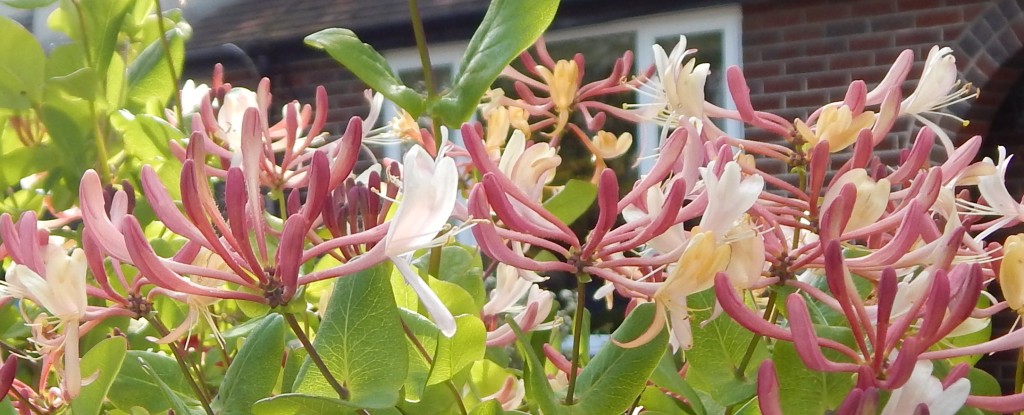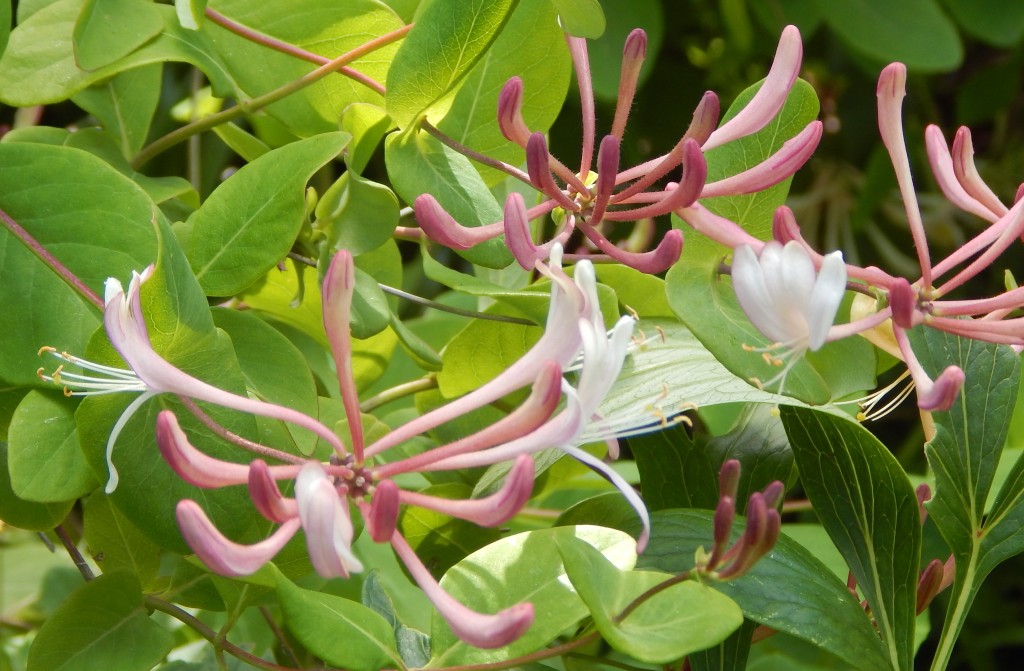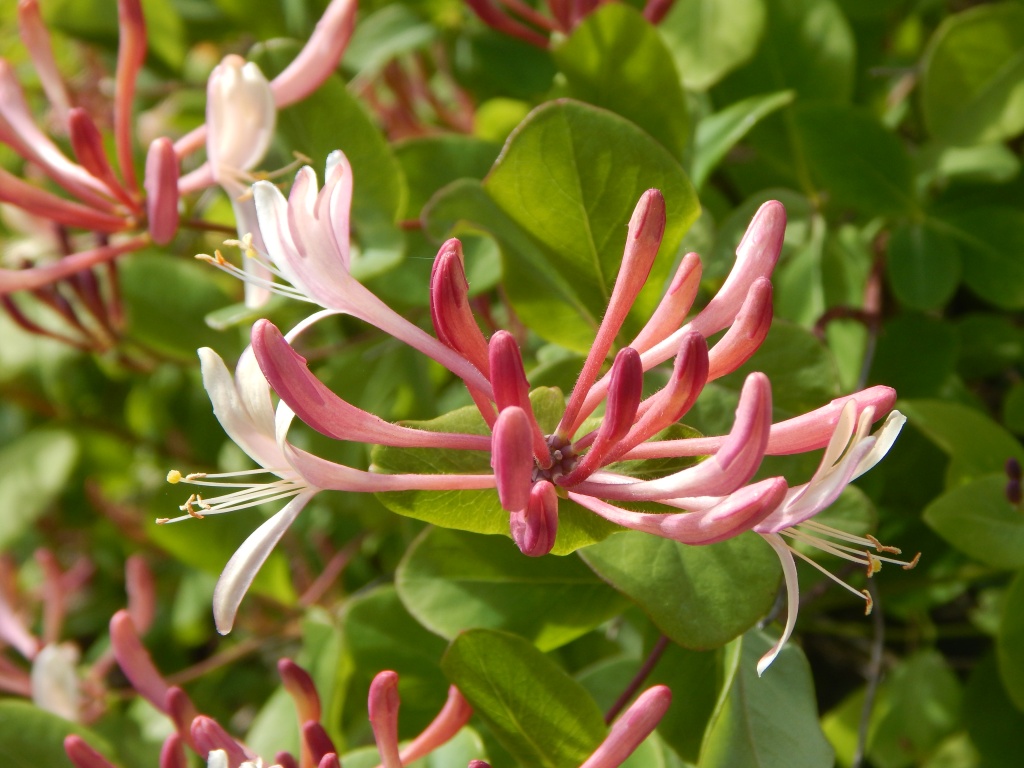
[213] Lonicera periclymenum, Honeysuckle
Introduction
Lonicera periclymenum, (Common) Honeysuckle, is a vigorous climbing plant, native to Britain and widely cultivated as a garden plant. It is also known as European Honeysuckle and was traditionally called Woodbine, although that name is also used for [091] Convolvulus. Most of the two hundred species of Lonicera are also called Honeysuckle.
In the USA it would be called a vine but, in the UK, we reserve this word for grapevines.
Taxonomy
Kingdom – Plants
Division – Vascular Plants
Class – Angiosperms (Flowering Plants)
Order – Dipsacales
Family – Caprifoliaceae
Subfamily – Caprifolioideae
Genus – Lonicera
Scientific Name – Lonicera periclymenum
Cultivars are available and other species and hybrids may be seen
Name
Honeysuckle is an Old English word, derived obviously from honey and suckle, probably from the sweet fragrance of its flowers.
Adam Lonicer, Latinized as Lonicerus, (1528-86) was a German Botanist. Periklymenon, one of the Argonauts of Greek mythology, was the son of Neleus and Chloris and a grandson of Poseidon, who gave him the ability to shapeshift into various animals. Honeysuckle takes his name as an epithet because its flower changes its shape and colour.
Description
Lonicera periclymenum is a vigorous, deciduous climbing plant.

Its long tubular flowers are white or yellowish, sometimes flushed with pink or red especially in bud. They come in closely clustered inflorescences and are highly scented by night.




The familiar view of the inflorescence is a circle of open flowers with one or more circles of growing buds above.








Habitat and use
Lonicera periclymenum is native to much of Europe. It is often found wild in hedgerows.
It is widely cultivated as a garden plant, sometimes climbing round other plants or covering walls.
Several other species of Lonicera are cultivated, especially Japanese Honeysuckle, Lonicera japonica. The flowers may be wholly or partly red or pink. Some varieties are evergreen and some are shrubs rather than climbers.

Other Notes
This is one of the species that are instantly recognisable from their flowers.

See also
As a wild or cultivated climbing plant with attractive flowers, it is best compared to [085] Old Man’s Beard and [084] Clematis, although these are not taxonomically close relatives.

Pingback: [330] Symphoricarpos albus, Snowberry | The Species of Britain
Pingback: [365] Zygaena trifolii, Five-spot Burnet | The Species of Britain